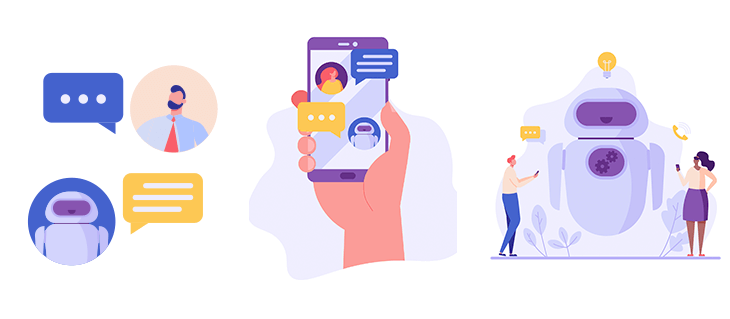6 Easy Tips to Optimize Your Website Chatbot for Better Interactions

How to Have More Conversions with Your Website Chatbot
Chatbots are quite a craze right now in the digital marketing world. It seems like every website you visit is looking to have an automated conversation with you. Are you really that much fun to talk to, or is there something else at play? As it turns out, a lot of buyers like using chatbots to find information, especially younger demographics. Ease of use, speed, and availability 24/7 make chatbots something any company should consider if they are looking for more qualified leads or an increase in sales.
When considering if you should have a chatbot, it’s important that you’re able to optimize the entire experience for your users. Below are the 6 tips we’ve outlined as ways to optimize your chatbot experience.
1. Identify Target Audience
Every company should have a target audience. Your product or service are built for someone in particular, so use this information to guide how you communicate through your bot. (In general, lawyers communicate differently than people who are starting a CBD business.)
For some businesses, like website design or HR services, a target audience could be spread out into multiple industries and maybe looking for different services. Try first using general questions that allow you to route your audiences, then go for more pressing questions that help identify if the user is a good fit for your product or service. Questions regarding budget, size of their business, and prior experience may help.
2. Identify The Objective
When installing a chatbot on a website, it’s best to consider what you want visitors to do. Are you looking to generate more qualified leads for your sales team, or are you trying to generate sales on-site (ie, on your eCommerce store)? Understanding where your customers may be in their decision-making process will help you set objectives along the way that help qualify or unqualify them as potential customers.
3. Customize the Experience!
A good bot interaction is actually replacing an interaction a receptionist or salesperson may have with a prospective customer or client. Try making the experience as welcoming and warm as possible to ease the user into feeling like their input matters. Treat people like people!
Try using multiple lines of questioning that will create a unique experience that is built around the user’s input, just like how a real person would react in conversation. If your questioning isn’t changing based on their input, it’ll seem one-sided and robotic, turning the user off to the experience. Also, most chatbots will allow you to use the user’s name in automated messages, further blurring the line between an automated system and a support assistant on the other end of the chat.
4. Make The Interaction Valuable
While the goal for most chatbots is to gather information from a potential customer, remember, that customer may not be interested in following up with a salesperson just yet. Try offering content or a marketing piece that helps the user get out of the situation they are in. They might be looking for confirmation that their roof really does need to be replaced, but their significant other is hesitant. A free consultation gives that user more information to make an informed decision, and may move the user from consideration to action. With our chatbot, we offer a site audit in exchange for their email address. The goal here is to identify if a site really does need to be redesigned, or if other services may suit the client better. Either way, both the client and our team are gaining valuable feedback that will help with the next step, as well as build trust.
5. Offer a Real Person’s Input
Once a user is able to answer all of the questions you have prepared for them through the bot, it might be time to introduce yourself or your team to give them a personal touch. Depending on timing, they may be more available at this moment then they will for the foreseeable future, so make it count!
Pro tip: It’s best to ask qualifying questions prior to the bot-to-associate hand-off so your sales team knows they are speaking with a lead that is worth their time.
6. Test, Measure, and Optimize!
Like all digital marketing, it makes sense to pay close attention to how people are interacting with your chatbot. See if there are snags in the conversations where your bot has to repeat itself, or if there is a wrinkle that is causing drop-offs.
Over time, some things may need to be updated to stay relevant for events, or you may notice opportunities by A/B testing two bots at once with different calls to action. It’s completely up to you how you choose to optimize, but take it from us that setting and forgetting your bot may have grave consequences.
Looking for Help with Chatbot Implementation?
Let our team help you weigh options for chatbot providers, as well as give you insight from our own perspective on the tool and how we’ve leveraged it in the past.